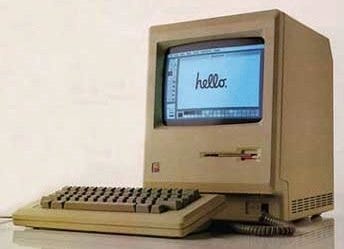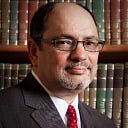History of Macintosh

The now-famous Macintosh computer has just turned 36. When Apple President Steve Jobs launched this computer at the Flint Center on De Anza College campus on January 24, 1984, to the theme from Chariots of Fire, he called it “insanely great!” The $1.5M “1984” Superbowl commercial filmed by Sir Ridley Scott had appeared on TV two days before Macintosh went on sale and the world was holding its breath.
When IBM released the so-called IBM PC in 1981, I remember saying at the time that it “legitimized the desktop microcomputer market,” at least for business. Though it was called a Personal Computer, few people that I knew had one at home. It was driven to popularity with MS-DOS, a character-based user interface, first with green characters on a black screen, then in living color. The PC had been around for almost a decade, back to the Xerox PARC Alto machine, but they were too expensive and too difficult to use for the ordinary mortal. The more hobby-friendly Commodore PET, Atari, TRS-80 were within people’s budgets but were mostly used by hobbyists. Early adopters used CP/M machines from Compaq in the business world. Even Apple II computers were around then.
But Macintosh was something different. Steve Jobs didn’t call it “The Macintosh,” but just Macintosh, like James Cameron’s movie, referred to the big boat as Titanic as if it had a name. Mac was a truly personal computer, ideal for the home as well as professional and educational environments. It was remarkable in that it had:
- Graphical User Interface (GUI) that even kids could figure out. I started my kids on Mac when they were 2.
- Mouse/menu-based operating system that did not require memorizing commands and typing classical geek on the keyboard.
- Bit-mapped screen allowing drawing any shape or picture on the screen and not just characters. It had lots of different fonts!
I got mine in 1985, as part of the Apple Developer Program, by driving up to the Apple loading dock in Cupertino and picking up my box. I’d already spent a few hours with one in the office where only marketing execs or publications folks got to use them. I was the corporate IT Manager administrating three super-mini computers at the time, and Macintosh was a curiosity. My office mate showed me how to use MacWrite and MacPaint — the only two programs shipping with the system — and I was hooked. I used it from home to dial in remotely to the office to check the status of my systems using a text-based terminal program. When I later went to Sun Microsystems, I used the same terminal program to do “shell” access to my work computer and keep up on my email and Netnews.
I had gotten the “Fat Mac” which was just like the initial 128KB Mac, but now with 512KB of memory. Who could need more!
Macintosh came with one floppy drive and no hard drive. Later, a SCSI interface allowed connection to a hard drive. For just $1,000 I got a 10MB hard drive to which you could network two Macs. This was living large.
At Sun, the early workstations used 70MB then 140MB SCSI hard drives. When they’d outlived their usefulness, they could be rewired with a SCSI ribbon cable and reformatted to Mac OS. Talk about information explosion.
The ’80s
In those early years, I would regularly attend the monthly A32 Computer Club meetings in Silicon Valley. These were attended by fellow geeks who were interested in the Apple 32-bit systems, aka the Motorola 68000-based Macintosh. There I got to meet the early Macintosh team and hear how they’d developed a particular system or what they were working on currently. Andy Hertzfeld, from the original team, showed us “Servant,” an early quasi multi-tasking system for Mac. I was in heaven. Guy Kawasaki would come out to speak. He was a regular favorite, always fascinating and funny.
“Now at the end of my talk I’d like to open it to Q&A or Question and Avoidance. You ask the questions and I’ll avoid answering them.”
I was so into it that I even wrote articles and product reviews for a Macintosh journal at the time.
In 1987 when I was working at Sun, Apple released Macintosh II, the first color, open architecture, expandable system. Just down the hall from me, company co-founder Bill Joy had one on his desk. I’d walk by often to drool. Apple continued to come out with more powerful systems using faster 680X0 chips, as Sun was doing. Additionally, Sun was using the same industrial design company Apple used, the German frogdesign. But a marriage between Apple and Sun was not to be.
The ’90s
In 1990 Microsoft launched MS Windows 3.0. It shared some of the same design elements of the Macintosh user interface and though not as good, was deemed by many as “good enough.” The market responded to the cheaper “Windows PC,” which went on to become the market share leader. In the ’90s, I was traveling internationally with a Macintosh Duo, a very small and light laptop that was a real head-turner. But when I traveled to China, I could not connect it to any projection system unless I brought my docking station.
In the mid-’90s, Apple licensed the Mac OS to 3rd parties to create clones. This foray into “openness” was shut down at the end of Mac OS System 7. I recall a talk at the San Francisco Macworld Expo — the biggest show of its kind in the newly opened Moscone Center and from which I’d bring home 20 lbs of brochures — when then Apple Exec Jean-Louis Gasee gave his astounding pro-proprietary talk “How to Keep the Japanese from Eating Our Sushi.”
The later ’90s were not as kind to Macintosh. Popular software applications became available on Windows first, and on Mac only much later, if at all. I’d often ask software vendors if they were planning a Mac version, and the answer was usually “if there is market demand for it,” which was code for “No.” By that time, I had to start carrying a Windows laptop for my international travel, and for almost a decade, I wandered in the Windows wilderness.
In 1994 Apple left the Motorola 680X0 microprocessor line behind for the PowerPC chip, as it seemed a good idea at the time. Even Sun had supported SunOS/Solaris on 680X0, and PowerPC before they moved entirely to the SPARC chip. Apple has since abandoned PowerPC for Intel, allowing Mac to run Windows or Mac OS… or both nowadays using virtualization technologies like VMware or Parallels.
The ’00s
In the mid-’00s, my wife complained to me about how slowly her Windows laptop was running. I explained that I would need to first back it up, reformat it, re-install Windows, and then restore the data. This was the usual response from Windows Support, essentially to lift off the radiator cap then drive a new engine underneath it. Or I could spend $600 on a Mac Mini. We went with the later. It took me 20 minutes to set it up and get it on the Internet. I was having so much fun with her machine that after a month, she threw me off, so I got my own, an iMac — the successor of the original all-in-one Macintosh. I’ve had three since then and haven’t looked back.
I still have my original 9″ Mac. And the latest 27″ iMac. And I work for a company civilized enough to supply me with a MacBook Air. And don’t get me started on my love for the iPhone and iPad that I’ve written about.
Bill Petro, your friendly neighborhood historian
www.billpetro.com
If you enjoyed this article, please consider leaving a comment or subscribing to the news feed to have future articles delivered to your feed reader or your email.
